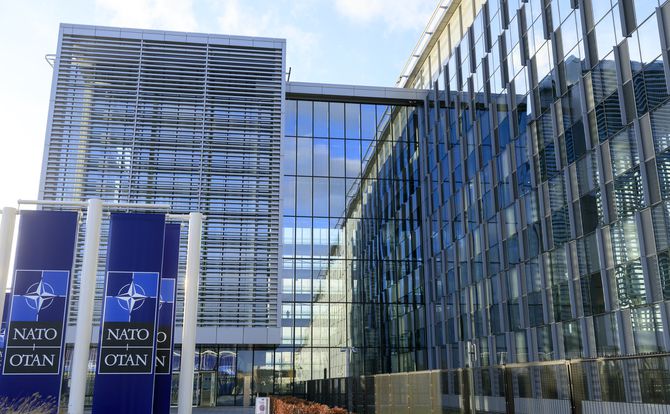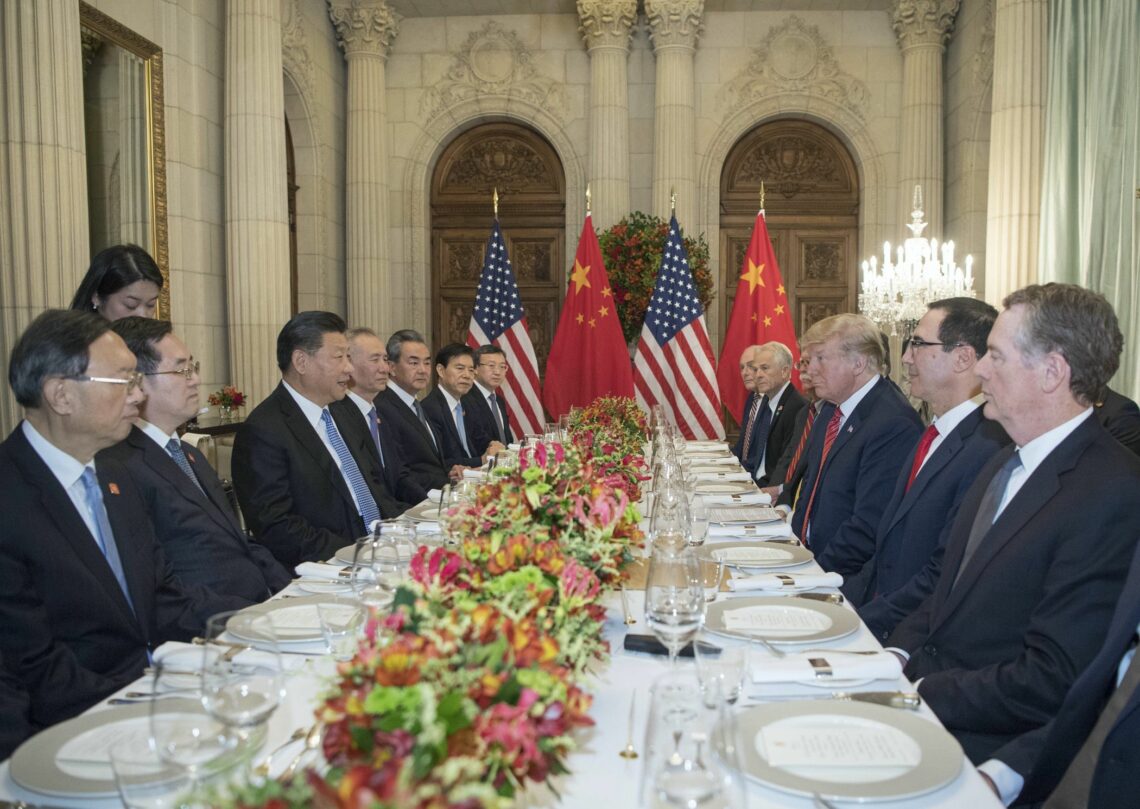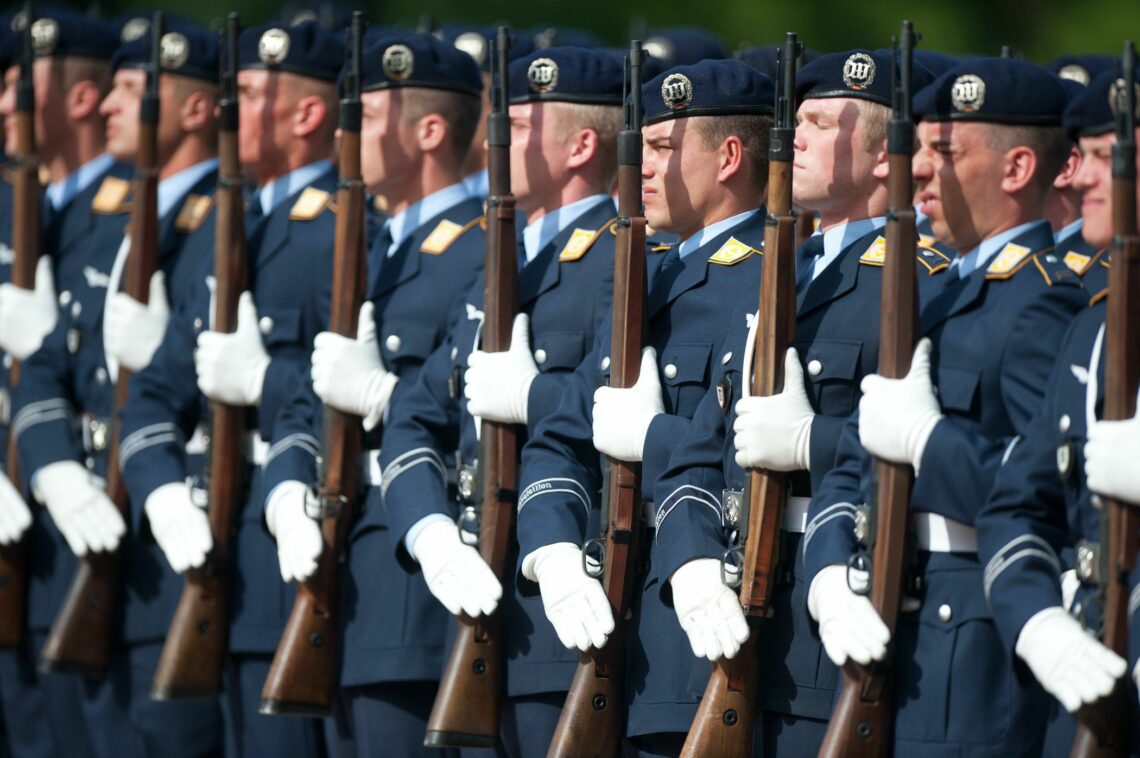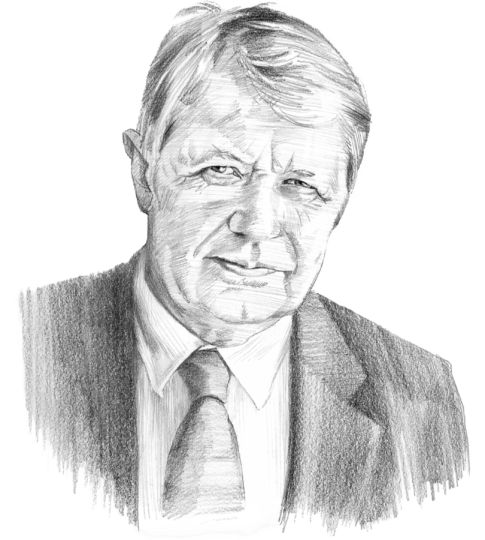Europe’s strategic future in global competition, Part 1
Defense does not rank these days very highly in Europe’s political discourse. Yet, with multilateral structures increasingly ineffective and the attitude of the United States ever more ambivalent, its European partners need to find their solutions. Simply waiting out a period of global turbulence is not an option.

In a nutshell
- Europe’s doctrine of territorial defense is being overtaken by changing conditions
- In the new Hobbesian world of great power competition, the EU is an incomplete player
- Individual nations are reassuming primary responsibility for their own defense
- All these trends require a review of Europe’s multilateral security architecture
Defense does not rank high these days in Europe’s political discourse, whether you look at the Brussels agenda, national debates, or the recent campaign to the European Parliament. Even so, present developments make future crises in European security ever more likely. At the same time, they appear to be foreclosing some of Europe’s best options to protect itself in an increasingly competitive global environment.
The new European Commission may include for the first time a commissariat for defense and security to help coordinate a variety of European Union agencies and initiatives in the defense realm. These include the European Defense Agency (EDA), the European Defense Fund (EDF), the Coordinated Annual Review of Defense (CARD), and Permanent Structured Cooperation (PESCO) programs. It is even possible that a joint Defense Council may come into being. With the United Kingdom headed out and other crucial defense partners like Norway and Turkey still not in, the EU badly needs to get more efficient in its organizational setup and military procurement. Even so, it will not be the main institutional framework for European defense.
Assuming a Brexit agreement is eventually reached (even if it is agreed to after the fact), the accompanying Political Declaration could be useful for preparing a framework to coordinate defense activities between the EU and Great Britain. Yet it, too, would not constitute a formalized institutional arrangement for Europe’s future defense. A “Conference on Europe’s Future” envisaged by the European Commission may open new avenues, but it will suffer from the same limitations unless it develops toward an intergovernmental conference, or IGC, that includes all European nations indispensable to the continent’s future defense.
Changing environment
Europe’s future defense policy will need to be guided by changes that are taking place in its external environment. Following the out-of-area expeditionary concept that dominated defense planning in most European nations for the past quarter-century (roughly from 1990 until 2014), the focus has switched back to collective defense, despite the lack of a unifying threat of aggression to EU or NATO members at large.
Events in Crimea and eastern Ukraine drove this policy shift. The reaction to this chain of events were economic sanctions, imposed on Russia with no specified conditions for their lifting and with extraterritorial application to Western allies, and a reorientation of defense policies that assumed hostile relations with Russia.
Europe is being forced to become a global player in its own right.
With the attitude of the United States toward Russia fraught with a certain duality, as Congress shows hostility and the White House ambivalence, Europe has even more reason to find its own strategic solutions. These will likely involve strengthening its military capabilities while maintaining the partnership with the U.S. and establishing a more amicable continental neighborhood with Russia.
The recent political changes in Ukraine, above all the election of President Volodymyr Zelenskiy in May 2019 and the subsequent landslide victory of his Servant of the People party in parliamentary elections, could well support this reorientation. By downplaying the repetitive blame games between Western capital and Moscow, it will allow the full complexity of the Russo-European relationship to resurface. Yet the extra freedom of maneuver provided by a cooling-down of the conflict in Ukraine only underscores the difficulty of preparing Europe for a strategic future with fewer international constraints and increasing global competition.
Reluctant competitor
Europe, however one defines it, is being forced to become a global player in its own right. Increasingly, it is caught in a quadrilateral dynamic between itself, the U.S., China and Russia that has come to dominate world affairs. This Hobbesian world of global competition may be searching for, but shows no signs of achieving, a new covenant, or “order of orders.” In such a context, effective policymaking requires a longer-term approach that allows for strategic choices. This approach can be a tall order for bureaucracies whose default mode is incrementalism.
Europe is especially vulnerable because the new quadrilateral world challenges its transactional style at nearly every level. Compared with its three main competitors, however, Europe’s most critical weakness is its inability to propagate and protect the benefits of its unique political and social model.
Because it is an incomplete global competitor, Europe cannot simply wait out a period of global turbulence. For more than 70 years, American leadership ensured the smooth functioning of global trade and finances and global security – largely because it succeeded in separating these two spheres institutionally. This division helped reduce friction in the security sphere and prevented conflicting economic and financial interests from intruding on grand strategy.

While security matters were made explicitly political (in Europe, through the NATO alliance), economic and financial affairs were depoliticized. An adversarial relationship toward the USSR and cooperation among each other were the organizing concepts. With the end of the Cold War, however, this separation of spheres gradually eroded. President Donald Trump’s administration ushered in a new age of security policy, where violent interference with global trade and weaponization of economic assets became increasingly normalized.
The spread of such practices poses special challenges to Europe as a global competitor, and especially to those European nations with their own global interests, stakes, outreach and interdependencies. Decisions made in these “empowered” nations – above all France, Great Britain and Germany – have a decisive effect on the welfare of most of their European neighbors.
The weakening of multilateralism in security matters seems irreversible.
Today, multilateral security organizations face the dual problem of honoring national defense prerogatives while seeking unanimity on decisions concerning collective security. These dilemmas apply to both NATO and the EU. The current trend is toward a growing renationalization of defense policy – without, however, strengthening national sovereignty and the capacity to act.
This has been accompanied by a progressive weakening of multilateralism that appears to be irreversible in security matters. Multilateralism was built on trust and shared interests were nurtured in the unique circumstances of a protracted East-West confrontation and its aftermath. Consequently, the American embrace of unilateralism will almost certainly have lasting consequences. These circumstances call for a serious reappraisal of Europe’s defense strategy and a coordinated effort to reduce its vulnerability.
National forces, multilateral defense
Throughout Europe, defense is considered to be a national prerogative; most nations continue to see it as the core of national sovereignty and statehood. Yet after the cataclysm of World War II, it was clear to every European nation that none could hope to defend itself individually against a major aggressor.
Postwar leaders like Winston Churchill and Robert Schuman shared a concern that a ruined Europe faced the prospect of an overwhelming attack by Russian forces stationed in the heart of the continent. They feared an armed onslaught of communism. Even though the Soviet Union was virtually exhausted by its wartime losses, the conflict in Korea reinforced those fears. They persisted through Western Europe’s rapid economic recovery, which took little more than a decade, and even survived the postwar political stabilization, which led Charles de Gaulle to observe that communism could develop only in the shadow of a national catastrophe.
Soviet troops remained in East Germany and the other occupied countries of East-Central Europe for another 45 years, though they were increasingly confronted by a rearmed Western Europe and U.S. forces, organized within an American-led NATO. However, efforts to establish a European Defense Union as the core of European political integration – whose embodiment was to be a European Army – failed even in France, the country that had pushed the idea in the first place.
In the Cold War, there was no rationale for European defense outside NATO.
Since that time, there has been no political rationale for building a strong European defense outside of the Atlantic alliance. NATO’s military integration allowed for national contributions and shares. The original German plan to contribute 12 divisions was intended by Chancellor Konrad Adenauer (1949-1963) to enhance Germany’s political standing within the alliance.
However, this aim was nullified by the subsequent reliance on nuclear over conventional deterrence, which gave pride of place to the American nuclear umbrella. Nuclear sharing rather than conventional contributions set the pecking order of NATO member states. Military integration thus worked through de facto transfers of sovereignty, without giving up national prerogatives or handing over power to a superior political authority. All that was unnecessary, given the acknowledged dominance of the U.S.
As Raymond Aron observed in the early 1960s, advances in military technology exacerbated the decline of nation-states. Supranational organizations, meanwhile, increasingly lacked political rationales. Yet national assertiveness increased in the early 1960s, most notably in France under President Charles de Gaulle (1959-1969).
Planning without enemies
This close relationship between the primacy of national responsibility and the quest for military integration without an underlying political rationale was encouraged by the doctrine of “flexible response” as an approach to deterrence. It was then stabilized by an evolving, treaty-based system of arms control, which became a decisive factor in the collapse of the Soviet Union and the withdrawal of Russian forces from Central and Eastern Europe. The latter development confirmed de Gaulle’s assessment that the USSR could not hope to conquer and occupy Western Europe, since its massive military presence in East-Central Europe was barely able to guarantee control over these far smaller satellite countries.
The withdrawal of Russian forces behind a new western border (in some locations shifted hundreds or even thousands of kilometers to the east) was yet another secular event. By the mid-1990s, Russia with a population of less than 150 million and an economy smaller than Italy’s was facing an increasingly integrated Europe with a combined population of 500 million and an economy larger than that of the U.S.

Europe thus found itself in an environment without a threat to the continent. Germany, as the former “frontline” state, now believed itself to be surrounded by friends. The Conventional Armed Forces in Europe (CFE) treaty of 1990 not only codified this situation, but subsequent drawdowns in troop strengths actually reversed the pre-CFE balances of forces. Military establishments in the EU area were drastically reduced, yet still achieved superiority over the even more weakened post-Soviet Russian forces. Moreover, both sides were now separated by long distances rather than being positioned nose-to-nose, reducing the danger of surprise attacks.
As George F. Kennan once pointed out, nations in multilateral military alliances are exposed to two risks. The first, intrinsic in the very nature of defense planning, is that military preparations themselves advance “very materially the inevitability of the conflict in question.” The Sleepwalkers, Christopher Clark ‘s magisterial account of the origins of World War I, offers ample evidence of this danger.
The second is that “far-reaching involvements with other countries, if allowed to endure for long periods of time, have a habit of surviving the situations that gave rise to them in the first place.” Their very existence creates new situations, which their creators could never have envisaged, and every decision on the organization’s future requires further political action, the “desirability of which has to be judged against the changing realities of a new day.”
Renationalizing defense
The absence of a common enemy could have led to a renationalization of Europe’s armed forces and a return to the military sovereignty of nation-states. Instead, to justify its continued existence, NATO turned to improving the capabilities of member states to perform a new mission – intervention outside Europe. This expeditionary concept required a new force structure and enhanced cooperation, both on an interservice basis and between coalition partners.
NATO’s retooled operational concept was tested in the Western Balkans, Afghanistan, Iraq and other hot spots in the Middle East and Africa. The results of these interventions were mostly frustrating. By the time the Ukraine crisis erupted in 2014, the alliance’s doctrine was ripe for reappraisal. Perceptions of an emerging threat to the east revived the priority of territorial defense, made even more urgent by the ongoing U.S. disengagement from Europe to meet requirements elsewhere.
One side-effect has been fragmentation among NATO’s European members.
NATO’s self-declared new “frontline states” in East-Central Europe now sought to generalize their current feelings of increased risk exposure to the alliance at large. However, this was not accompanied by any effort to devise a revised grand strategy for the North Atlantic alliance – a prospect that had become unlikely in any case given the growing transatlantic tensions of the Trump era.
Increasingly, the U.S. has come to view Eastern Europe as the center of gravity for European security. An unintended side-effect of this approach has been to exacerbate fragmentation among NATO’s European members, which have sharply differing perceptions of their relative risk exposures. These differences have become even more pronounced given the wide spectrum of security threats – ranging from illegal migration, terrorism, nuclear proliferation and hybrid war to cyberattacks, trade disputes and economic blackmail – that many of the alliance’s members are facing, including sometimes from their own NATO allies.
Collective options
Politically, the renationalization of defense is now a fact. In an atmosphere of rising populism, this could lead in various European countries to one of two opposite poles: defense “fatigue” or some new version of militarism. The armed forces would either be regarded as an international responsibility and a burden, eroding their political justification and domestic support, or cherished as an essential attribute of statehood, reinforcing nationalist sentiment. The only countries that may prove immune to these extremes are the handful of empowered nations with strong military traditions.
These political circumstances make the Atlantic alliance as important as ever as a framework for U.S.-European security cooperation, even though NATO’s purely military rationale still calls for a thorough reappraisal. Popular support for national defense forces is diminishing, even as the shift to volunteer armies makes it even more essential.
Despite much lip service, the prospects of developing European defense planning within the EU framework appear as distant as ever. This is so even as Brexit has lent some support to France’s institutional approach to European defense. With the UK out, Britain will no longer be a barrier in steps toward a European defense union, though British military capabilities exceed those of most of the rest of the EU put together.
A European Army is unlikely, given the diversity of national postures.
The bloc has taken several steps to improve cooperation in the defense industry, even though limitations on arms exports remain a serious obstacle to continued improvement. In the absence of structured cooperation between national armed forces, procedural improvements like PESCO have limited value. There may be further progress toward a European Defense Union, but France’s real interest is most likely to combine some kind of continental defense construct (most likely under French guidance) with closer bilateral military cooperation with the UK, the only other nuclear power in Western Europe.
This puts Germany in a particularly awkward position (of which more later, in the second part of this report). It would be stuck in a European defense structure without a political rationale or perspective, in a NATO alliance suffering from an uncertain U.S. commitment, and in a European Defense Union where it is doomed to play second fiddle to France and Great Britain. (These two countries cooperate largely outside the EU framework, anyway).
Even assuming the defense union can be brought within the EU, this framework would deprive Europe of any chance to compete strategically on the global level – which is an only true gauge of ambition for a geopolitical entity of its size. The fiction of a European Army is an even less likely outcome, given the growing diversity of national postures. This means the future of European defense and the continent’s global role will depend on the policies of a handful of empowered nations. Here the position of Germany, even if it has shed its earlier status ambitions, will be decisive.
Devolved decision
At a minimum, the foregoing suggests it is high time to review the state of the North Atlantic alliance. Today the political discourse is dominated by NATO member countries’ commitment to spend the equivalent of 2 percent of the gross domestic product (GDP) on defense. There have been similar pledges in the alliance’s history, but they have usually concerned implementing joint modernization programs in a longer-term perspective.
This time, there is an obvious need to increase NATO members’ defense spending, even though there is no agreed armaments program to be implemented, let alone a shared concept of the alliance’s future role. More than ever, the decision has devolved down to the national level. However, on an individual country basis, there is no way to jointly determine national shares and contributions to the common defense, especially over the long haul.
There is an obvious need to increase defense spending, but no agreed arms program.
The absence of a shared threat assessment and uncertainty about the American defense commitment to Europe makes national policymaking even more difficult. If national force requirements are virtually impossible to determine based on individual contributions to multilateral structures, is there another way to set them according to operational needs? It seems impossible for European countries to detach themselves from their current political interests in a kind of “Archimedean point,” from which they can calmly survey their national defense priorities in relation to needs and roles in the rest of Europe.
In the absence of strong leadership from Washington and Brussels, the task reverts to national leadership. With no shared threat assessment or concept of collective defense, military planning in the European context has become a matter of national interest. As with international trade, the armed forces of only a few countries – grouped around France, Great Britain and Germany – enjoy real competitive advantages. Given their global strategic interests and potential, these empowered nations would do well to review the condition and objectives of their militaries.
In other words, buttressing Europe’s collective defense should start as a national effort, not the other way around. Until that work is done, more NATO summits will not help.








